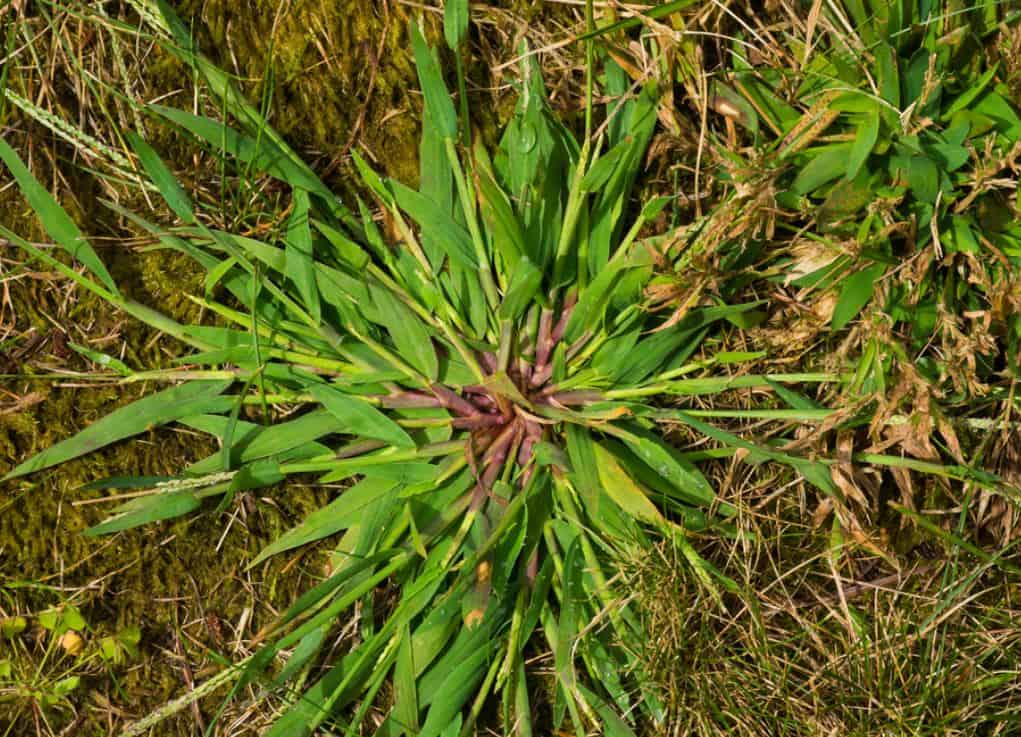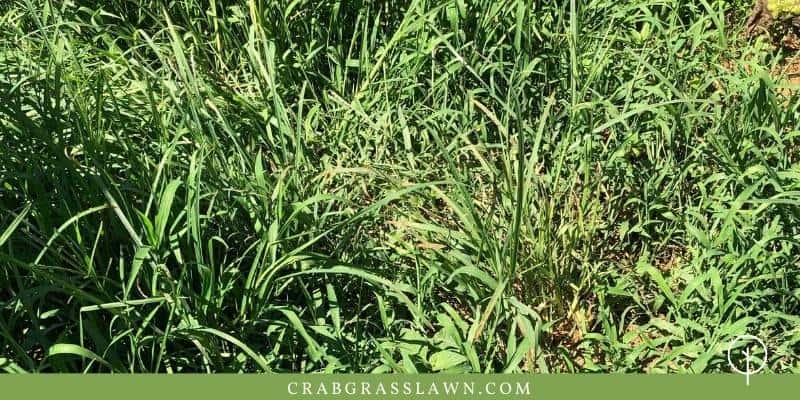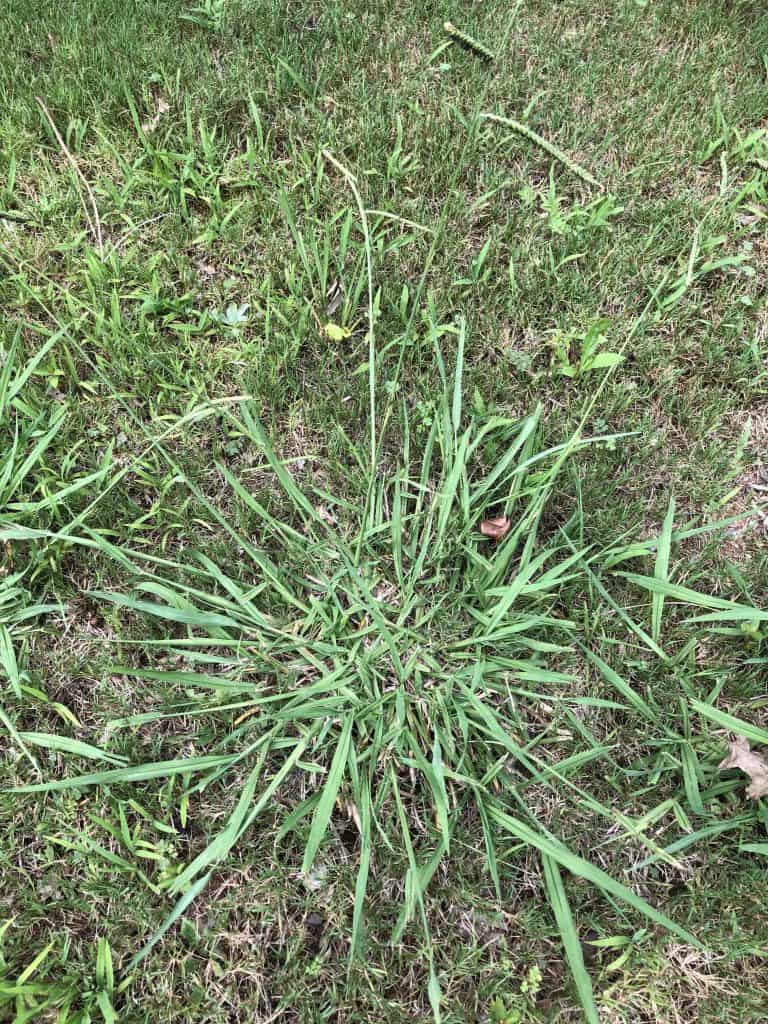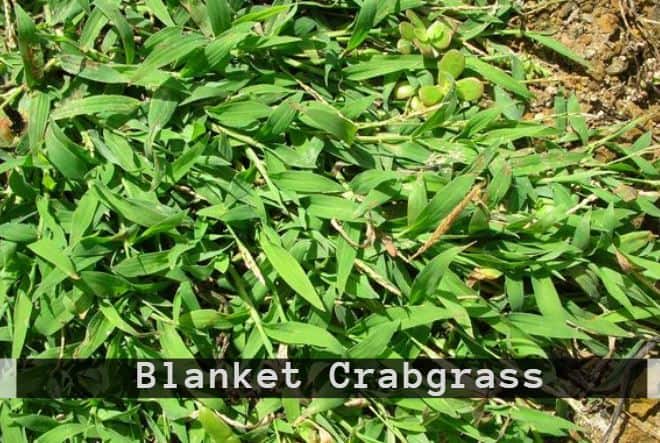When the name crabgrass comes to mind, you certainly think about one of the most invasive weeds. This claim is well established: with its resilience, crabgrass is so hardy that it can sprout and grow well not only in gardens but also in beds and concrete.
There are at least 33 different listed species of crabgrass. However, the most common types of crabgrass in North America are smooth crabgrass and hairy crabgrass.
Ideally, the types of crabgrass majorly differ in the naming, prevalence, and where they are located. While scientific classification may give detailed differences in terms of biology, this article focuses on major distinguishing features and unique facts.
Regardless of the type of crabgrass you have, if you are looking for a good crabgrass killer product you can either see our full review or go with a product called Tenacity.
Identifying different types of crabgrasses
Some of the different types of crabgrass include:
Short, smooth crabgrass

Although it is common in North America, this weed is native to Europe and Asia. It only rises above the ground up to about 6 inches in height. Its stems are also smooth and broad.
The grass is very common, especially in the summer months. The statistics are quite amazing: it is estimated that about 90% of all the crabgrass in Michigan lawns is smooth crabgrass.
Its leaves are rolled in the bud and it has no auricles. It has compressed sheaths with a characteristic tinge of the color purple.
Long, hairy crabgrass

This weed comes with a variety of names. Some call it the large crabgrass yet others have also named it the common crabgrass. Nevertheless, its scientific name is Digitaria sanguinalis It has an annual life cycle and traces its origin to Europe.
Hairy crabgrass thrives well in rich clay or sandy soil. However, it is so versatile that you can find it on many lawns, sidewalks, roadsides, cracks, railroads, and even waste areas.
On average, this weed grows to a height of about 1 to 3 feet. Its flowers are arranged in finger-like arrays of 2 to 15 spike-like clusters, which are organized in 1 to 3 whorls. It has alternate leaves that measure 2 to 10 inches long and about 2/3 inches wide.
Asian crabgrass
Asian crabgrass is scientifically known as Digitaria bicornis. This name may mislead you somehow. This plant is native to the southeastern part of the United States, West Indies, and South America – contrary to what the name may suggest.
While some farmers consider Asian crabgrass a pasture grass, other people see it as a mere lawn pest. Those who find value in it grow it in gardens and lawns.
It can thrive well in a variety of climatic conditions, from tropical to subtropical as well as temperate climates.
Southern crabgrass

The facts about southern crabgrass are quite impressive. Its growth pattern is similar to smooth and large crab grasses. However, the major difference is that it has a prominent midvein.
Its leaf blades can also have either no hairs or just a few hairs close to the base of the blade. Just like the large crabgrass, its leaf sheath also has long hairs.
The botanical name for southern crabgrass is Digitaria ciliaris. It is believed to have originated from Asia, though it nowadays exists all over the tropical belt including the temperate regions.
It is an annual plant that can grow to a length of 1m tall. Its leaves are somewhat well organized, forming a linear-ovate narrowing at the tip.
Blanket crabgrass

Despite having a botanical name of Digitaria serotina, this plant native to North America also comes with a variety of names. It is commonly referred to as the rabbit crabgrass or the dwarf crabgrass.
Blanket crabgrass is a short-lived perennial plant thriving mostly in warm climates. The major form of propagation is via seed, though the plant can easily spread by forming roots at respective nodes.
Mature plants of blanket crabgrass characteristically remain prostrate in the ground as their stems run along the soil, though its flowers rise off the ground erect.
It has relatively short leaf blades – usually not more than an inch long. Its leaf sheath and blades are also noticeably hairy and it has short flower stems.
While these are not the only types of crabgrass, they are the most common. Other types are also named based on their places of origin or where they are commonly found.
For instance, Carolina crabgrass is abundantly found in North Carolina. Madagascar crabgrass is found in Madagascar and Queensland blue couch mostly thrives in Queensland.
Besides naming based on locality, quite a number of these weeds are given colorful names that conveniently suit their characteristics.
Some of them include cotton panic grass, naked crabgrass, and comb finger grass.
See also my article comparing:
Conclusion
Crabgrass is a common occurrence, especially in lawns. This weed is capable of producing a whopping 150 to 700 tillers and 150,000 seeds. While some people may plant some of them for their nutritious value. Most of these grasses are considered weeds which damage lawns and should be removed.
To effectively remove these weeds, you may- need to talk to a professional agriculturalist who better understands the life cycle of these weeds and can help you with any strategy you apply to either remove or grow them.
References
- http://www.ct.gov/caes/lib/caes/documents/publications/fact_sheets/valley_laboratory/crabgrass_control_factsheet.pdf
- https://plants.usda.gov/core/profile?symbol=dibi
- https://www.gri.msstate.edu/ipams/FactSheets/Southern_crabgrass.pdf
Hi, Alex Kuritz here. Growing up I remember that my family had one of the best lawns in the neighborhood. Richly green and lush. I did a lot as I grew up in terms of caring and tending for not only my family’s lawn but also my neighbors. I can say I have years of experience, and I am here to share it with you.



Vigoro’s Crabgrass and Weed Killer, KILLS Dogs by seriously affecting their gall bladders. Vigoro’s manufacturer is being sued for failure to disclose this danger, which affects dogs long after Vigoro determined to be safe. If you have pets and/or children do not purchase this poisonous material.